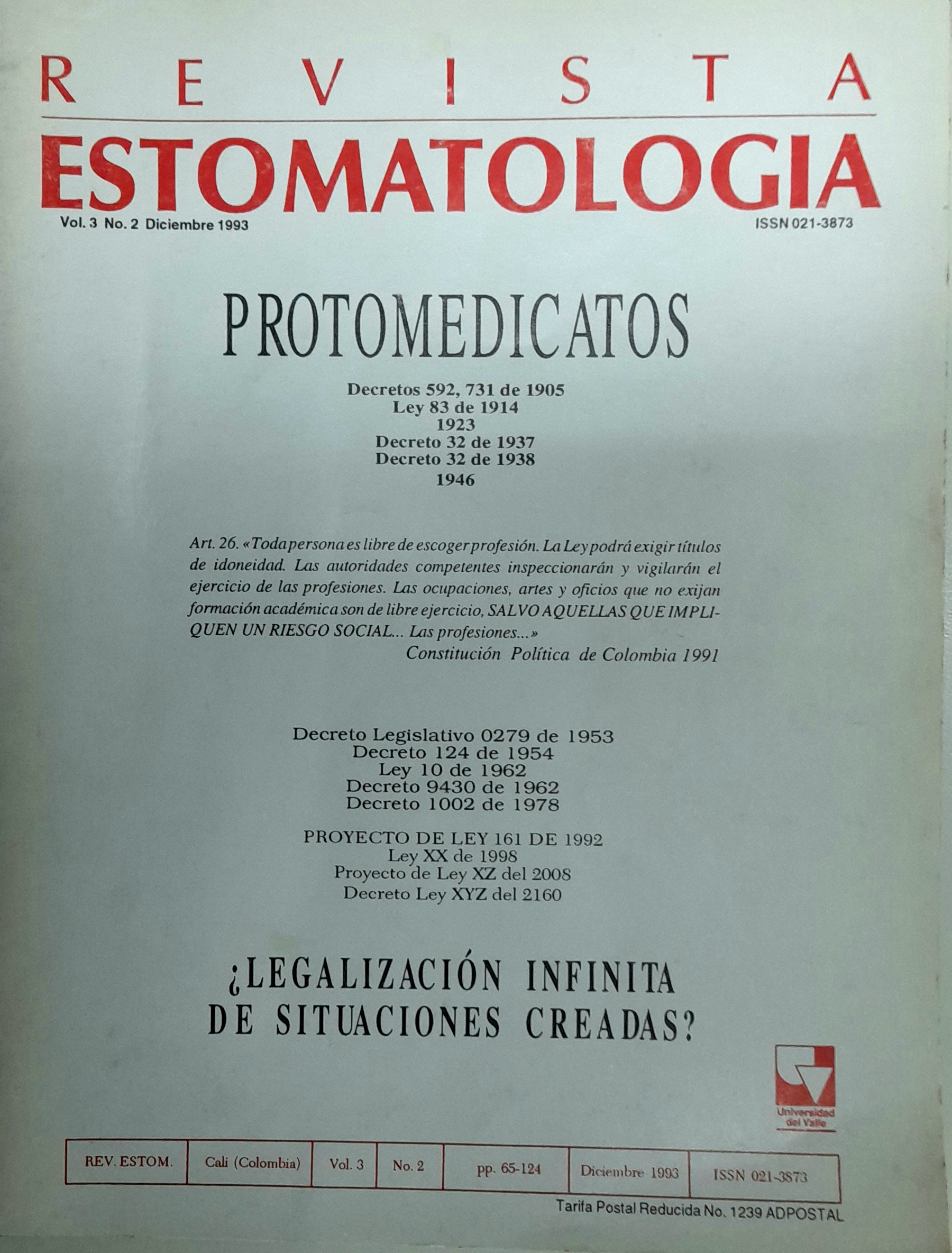Avances en inmunología y respuesta del huésped en enfermedad periodontal
Keywords:
Inmunología, Periodontitis, Respuesta del huésped Periodontitis, HLA/CMW Antígenos, CDs, Citoquinas, Anticuerpos, Proteoglicanos, Mediadores de destrucción tisularMain Article Content
Understanding the role of the immune system against periodontal bacterial infections may provide the basis for better and more rational strategies for the treatment of periodontitis. In this review the advances in immunobiology are discussed. They offer many aplications in the periodontic area and facilitate understanding of immunopathogenesis of periodontal diseases. The followed topics are discussed: immune cells and their regulatory cell surface molecules, such as the Major Histocompatibility Complex (CMH), cluster of differentation antigens (CD antigens), the effector systems set into motion such as phagocytes and citotoxic cells and the effector molecules such as antibodies, mmplement and citokines, the cell surface receptors as Integrins, Icams, Selectines, CD 44 homing, the mediators including the proteoglycans, the kinins, the anaphylatoxins, the products of araquidonic metabolism such as protaglandins and leumtrienes, the biologically active amines as histamine and serotonine, the innate immunity and the host responses in periodontitis, facuses on studies that show correlation between HLA and neutrophil abnormalities up to recognition that the critical axis is neutrophillantibody/ complement for protection against periodontopatic bacteria. Abnormalities in those systems often lead to increased periodontal susceptibility. The precise role of immune system in periodontitis remains to be elucidated, but recent advances in these areas offer a predictable guide for the treatment of those diseases.
Downloads

This work is licensed under a Creative Commons Attribution-NonCommercial-NoDerivatives 4.0 International License.
Los autores/as conservan los derechos de autor y ceden a la revista el derecho de la primera publicación, con el trabajo registrado con la licencia de atribución de Creative Commons, que permite a terceros utilizar lo publicado siempre que mencionen la autoría del trabajo y a la primera publicación en esta revista.

